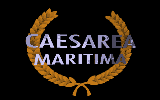|
Text extracted from Reinhardt, E.G., Combined Caesarea Excavations: The Single Mission Barges of Caesarea Maritima. Retrieved December18, 2001 from http://hannover.park.org/Canada/Museum/caesarea/Joseph.html
 Reinhardt, E.G., Combined Caesarea Excavations: The Single Mission Barges of Caesarea Maritima. Reinhardt, E.G., Combined Caesarea Excavations: The Single Mission Barges of Caesarea Maritima.
"The historian Josephus Flavius, who was born around 7 or 8 CE, published a history of the Jewish War between 75 and 79 CE and a history of the Jewish people in 93-94 CE. Both these works contain a detailed description of the city of Caesarea and its harbour, Sebastos. Despite certain inevitable inaccuracies, the data contained in these descriptions has been of great value in assisting the reconstruction of the layout and appearance of the harbour in the Flavian period"(2).
  
-
v. "His (Herod's) notice was attracted by a town on the coast, called Strato's Tower, which, "though then dilapidated, was, from its advantageous situation, suited for the exercise of his liberality. This he entirely rebuilt with white stone, and adorned with the most magnificent palaces, displaying here, as nowhere else, the innate grandeur of his character. For the whole seabord from Dora to Joppa, midway between which the city lies, was without a harbour, so that vessels bound for Egypt along the coast of Phoenicia had to ride at anchor in the open when menaced by the south-east wind; for even a moderate breeze from this quarter dashes the waves to such a height against the cliffs, that thier reflux spreads a wild commotion far out to sea. However, by dint of expenditure and enterprise, the king triumphed over nature and constructed a harbour larger than the Piraeus, including other deep roadsteads within its recesses"(2).
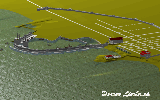 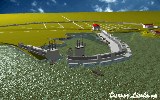 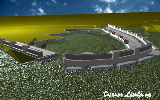
-
vi. "Notwithstanding the totally recalcitrant nature of the site, he grappled with the difficulties so successfully, that the solidity of his masonry defied the sea, while its beauty was such as is no obstacle had existed. Having determined upon the comparative size of the harbour as we have stated, he had blocks of stone let down into twenty fathoms of water, most of them measuring fifty feet in length by nine in depth and ten in breadth, some being even larger. Upon the submarine foundation thus laid he constructed above the surface a mole two hundred feet broad; of which one hundred were built out to break the surge, whence this portion was called the breakwater, while the remainder supported a stone wall encircling the harbour. From this wall arose, at intervals, massive towers, the loftiest and most magnificent of which was called Drusion after the step-son of Caesar (the Emperor Augustus)"(2).
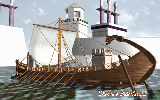 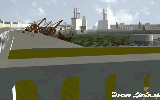 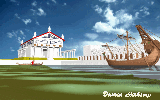
-
vii. "Numerous inlets in the wall provided landing-places for mariners putting into the harbour, while the whole circular terrace fronting these channels served as a broad promenade for disembarking passengers. The entrance to the port faced northwards, because in these latitudes the north wind is the most favourable of all. At the harbour-mouth stood colossal statues, three on either side, resting on columns; the columns on the left of vessels entering port were supported by a massive tower, those on the right by two upright blocks of stone clamped together, whose height exceeded that of the tower on the opposite side"(2).
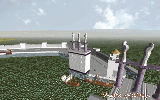  
-
vii.(cont) "Abutting on the harbour were houses, also of white stone, amd upon it converged the streets of the town, laid at equal distances apart. On an eminence facing the harbour mouth stood Caesar's temple, remarkable for its beauty and grand proportions; it contained a colossal statue of the emperor, not inferior to the Olympian Zeus, which served for its model, and another of Rome, rivalling that of Hera at Argos. The city Herod dedicated to the province, the harbour to navigators in these waters, to Caesar the glory of this new foundation, to which he accordingly gave the name of Caesarea"(2).
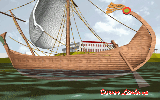  

(2) Text extracted from Reinhardt, E.G., Combined Caesarea Excavations: The Single Mission Barges of Caesarea Maritima. Retrieved December18, 2001 from http://hannover.park.org/Canada/Museum/caesarea/Joseph.html
|
